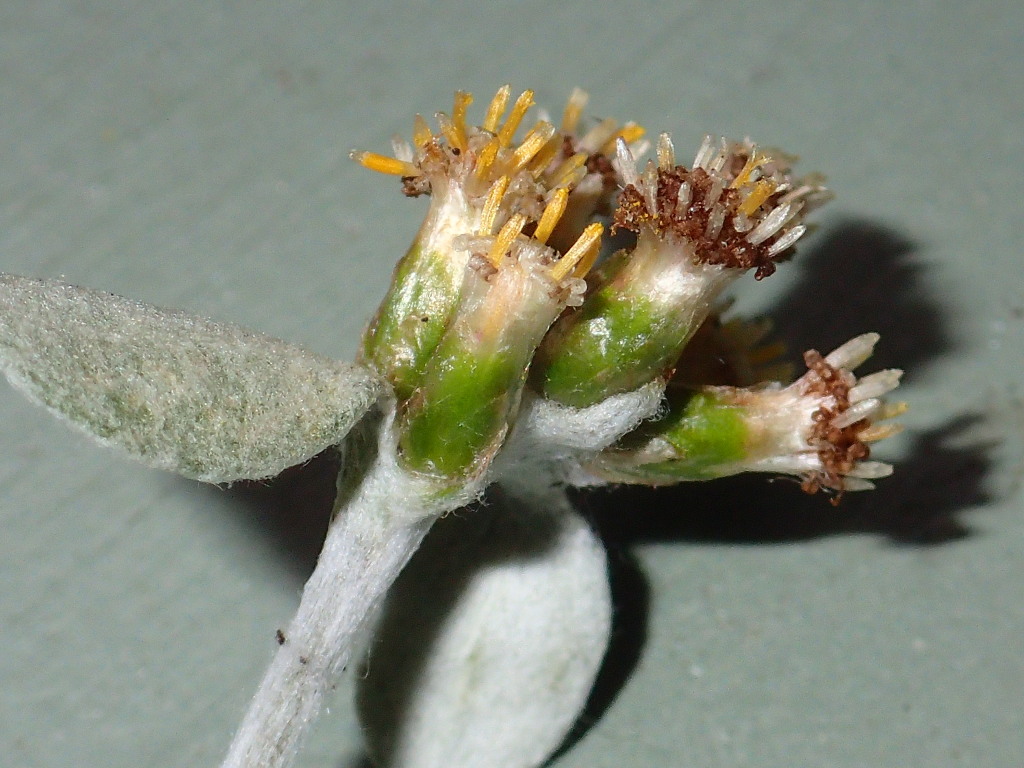Euchiton umbricola
(J.H.Willis) Anderb. Cliff CudweedTufted, often stoloniferous perennial. Leaves rosetted and cauline, elliptic, obovate or oblanceolate; rosette leaves often long-pseudopetiolate, 1–8(–13) cm long, 5–13(–25) mm wide, upper surface greyish, cobwebbed, occasionally glabrescent, lower surface whitish, with dense, appressed, cottony hairs. Flowering stems spreading to ascending, 5–10(–15) cm long, with c. 4–many leaves smaller than those of rosette, usually becoming more densely cobwebbed above toward inflorescence. Inflorescence terminal (rarely 1–few small axillary clusters below), 8–15 mm diam.; subtending leaves 2–4, 6–25 mm long, densely felted above. Capitula 4–10, campanulate or cup-shaped; inner bracts c. oblong, 3.5–4.5 mm long, obtuse, deeply lacerated at apex, hyaline in the upper half, rarely with a faint purplish band; bisexual florets 6–16 (sometimes more than female florets). Cypselas 1.2–1.4 mm long, sparsely hairy. Flowers Oct.–Feb.
GipP, CVU, EGL, EGU, HSF, HNF, MonT, HFE, VAlp. Also NSW, Tas. Uncommon in Victoria, confined almost exclusively to shaded cliff-faces (often near waterfalls) and boulders above c. 1000 m, but occurring disjunctly at c. 400 m at Kinglake National Park.
The lacerate inner capitular bracts, and relatively high number of bisexual florets are unique in the genus.
Walsh, N.G. (1999). Euchiton. In: Walsh, N.G.; Entwisle, T.J., Flora of Victoria Vol. 4, Cornaceae to Asteraceae, pp. 820–825. Inkata Press, Melbourne.
 Spinning
Spinning
